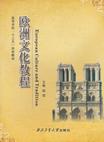欧洲文化教程
出版时间:2010-9 出版社:西北工业大学出版社 作者:赵硕 编 页数:312 字数:360000
前言
欧洲的大门一打开,就像一座内存无数宝藏的博物馆一样令人沉醉。欧洲是见证人类文明发展和辉煌成就的大陆,它集古典与现代、激情与内敛、典雅与时尚于一身,是令无数旅行者身心向往的地方。在1000多万平方千米的欧洲土地上,生息着45个国家和地区。璀璨的爱琴古文化,有如蓝天白云那样纯净;塞纳河畔的浓香咖啡,让人回味良久;伦敦的蒙蒙大雾,让人迷失在古老的贵族气质中……没到过欧洲的人,可能会有不同的想象;到过欧洲的人,一定会流连忘返。欧洲和中国的面积相差不多,在这片富饶多情的土地上产生的国家、民族、语言、历史、景观复杂多样,丰富多彩。通过《欧洲文化教程》,我们想极力给高校学生和广大朋友展现一个真实的欧洲,选择最具代表性的国家和城市,帮助其了解欧洲历史文化、风土人情,观赏欧洲风光,享受欧洲现代文明。本书是面向中国大学英语文化学习的通用教材,以英语语言为主,可用于本科生和研究生的英语文化知识学习。学习英语的中国大学生在阅读英文书刊和同欧洲国家人士的交往中,往往感到由于缺乏欧洲文化知识而面临许多困难。英语中有不计其数的典故、名言、成语、人名、地名等等来自欧洲的哲学、文学、历史著作,或者牵涉到各时期欧洲各国的思想、文化、政治、社会方面的重要事件和人物。通过文化来学习语言,既提升了学习兴趣,语言也会学得更好。《欧洲文化教程》选取法国、英国、荷兰、比利时、德国、奥地利、瑞士、瑞典、丹麦、芬兰、西班牙、意大利、希腊、俄罗斯、波兰等15个欧洲主要国家,分别介绍了它们的历史地理、主要城市、风土人情、民族节日和饮食旅游等内容。全书包括一个章节的欧洲文化总体介绍和十五章欧洲各主要国家的文化风情,按时间顺序介绍了欧洲文化的源流发展。最大的特点是避免了一般英语文化书籍枯燥乏味的叙述,代之以具体的史实和丰富的图片,从而增加了趣味性和可读性。其中第一、二、五、十一章由赵硕、刘波编写,第六、七、十五、十六章由蒲冬梅编写,第三、四、九、十二章由常秦编写,第十三、十四章由刘洁编写,第八章由蒲冬梅、赵硕编写,第十章由常秦、房慧编写,书中所涉及的主要数字参考了维基百科和国家百科全书。由于能力所限,书中难免会有一些错误,我们将在今后的工作或再版时予以纠正。
内容概要
本书选取法国、英国、荷兰、比利时、德国、奥地利、瑞士、瑞典、丹麦、芬兰、西班牙、意大利、希腊、俄罗斯、波兰等15个欧洲主要国家,分别介绍了这15个国家的历史地理、城市概况、教育经济、传统文化、风土人情、民族节日和饮食旅游等内容,旨在帮助学生了解欧洲历史文化、风土人情,品味欧洲古代历史和现代文明,拓展学生的视野。 本书可作为中国大学英语文化学习者的通用教材,也课供英语学习爱好者参考使用。
书籍目录
Chapter One IntroductionChapter Two FranceChapter Three BritainChapter Four NetherlandsChapter Five BelgiumChapter Six GermanyChapter Seven AustriaChapter Eight SwitzerlandChapter Nine SwedenChapter Ten DenmarkChapter Eleven FinlandChapter Twelve SpainChapter Thirteen ItalyChapter Fourteen GreeceChapter Fifteen RussiaChapter Sixteen Poland
章节摘录
插图:The earliest known cultural tribes of the area were members of the Hallstatt and La Tene cultures, named after the archaeological site of La Tene on the north side of Lake Neuchatel. La Tene culture developed and flourished during the late Iron Age from around 450 BC, possibly under some influence from the Greek and Etruscan civilizations. One of the most important tribal groups in the Swiss region was the Helvetii. In 58 BC, at the Battle of Bibracte, JuliusCaesar's armies defeated the Helvetii. In 15 BC, Tiberius, who was destined to be the second Roman emperor and his brother, Drusus, conquered the Alps, integrating them into the Roman Empire. The area occupied by the Helvetii-the namesakes of the later Confederation Helvetica——first became part of Rome's Gallia Belgica province and then of its Germania Superior province, while the eastern portion of modern Switzerland was integrated into the Roman province of Raetia.In the early Middle Ages, from the 4th century, the western extent of modern-day Switzerland was part of the territory of the Kings of the Burgundians. The Alemanni settled the Swiss plateau in the 5th century and the valleys of the Alps in the 8th century, forming Alemannia. Modern-day Switzerland was therefore then divided between the kingdoms of Alemannia and Burgundy. The entire region became part of the expanding Frankish Empire in the 6th century, following Clovis I's victory over the Alemanni at Tolbiac in 504 AD, and later Frankish domination of the Burgundians.Throughout the rest of the 6th, 7th and 8th centuries the Swiss regions continued under Frankish hegemony (Merovingian and Carolingian dynasties). But after its extension under Charlemagne, the Frankish empire was divided by the Treaty of Verdun in 843. The territories of nowadays Switzerland was divided into Middle Francia and East Francia until they were reunified under the Holy Roman Empire around 1000 AD.
编辑推荐
《欧洲文化教程》:高等学校“十二五”规划教材
图书封面
评论、评分、阅读与下载
用户评论 (总计2条)
- 这本书抄袭内容比较多,多数引自维基百科,不值得买
- 很值的一本书,可以细细品读欧洲各个国家的大致情况。
推荐图书
- 不可不知的1000个哲学常识
- 孟子
- 无分别的分别
- 儒学与巴哈伊信仰比较研究
- 党的十七届五中全会〈建议〉学习辅导百问
- 群体性事件
- 日本政府绩效评估模式研究
- 江宁区劳动和社会保障志
- 云南蓝皮书·2009~2010 南亚报告
- 最佳学习模式(下)
- 2014年·5年中考3年模拟
- 九年级物理下
- 九年级物理下
- 教师备课参考
- 教师备课参考·小学数学 六年级上册
- 教师备课参考·小学语文 六年级上册
- 教师备课参考·小学数学 三年级上册
- 教师备课参考(3年级上册)
- 教师备课参考·小学数学 四年级上册
- 教师备课参考·小学数学 五年级上册
- 教师备课参考·小学语文 一年级上册
- 2012版 5年中考3年模拟(九年级下)
- 2012版 5年中考3年模拟(九年级下)
- 测量学基础与矿山测量
- 钻石检验员
